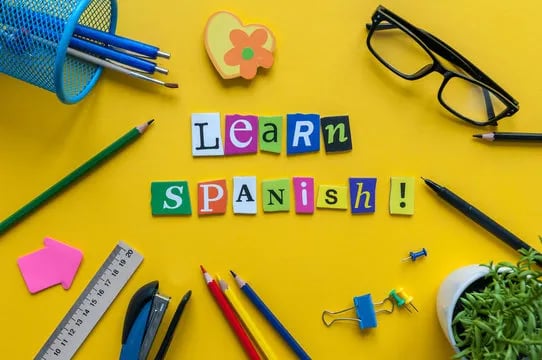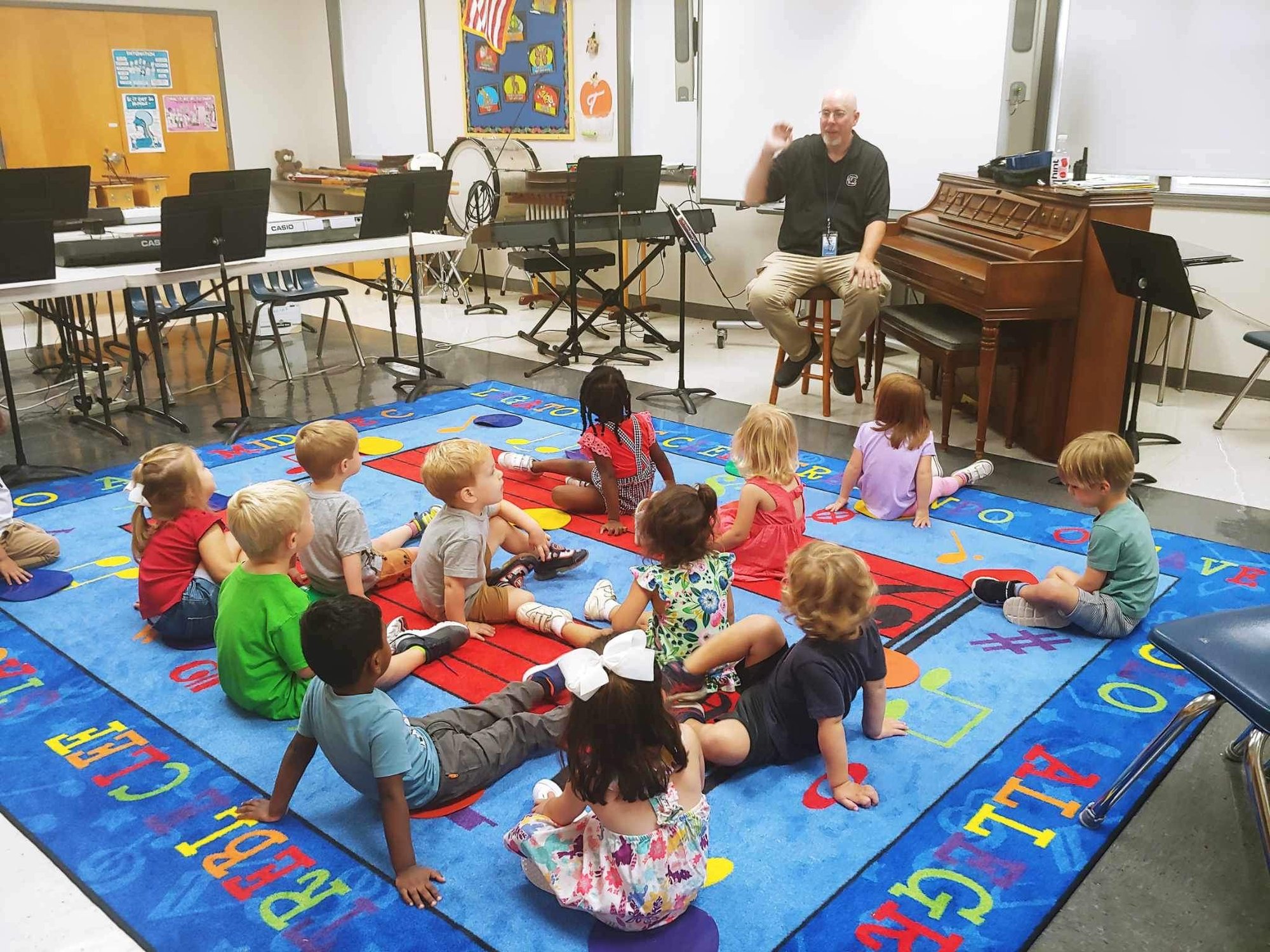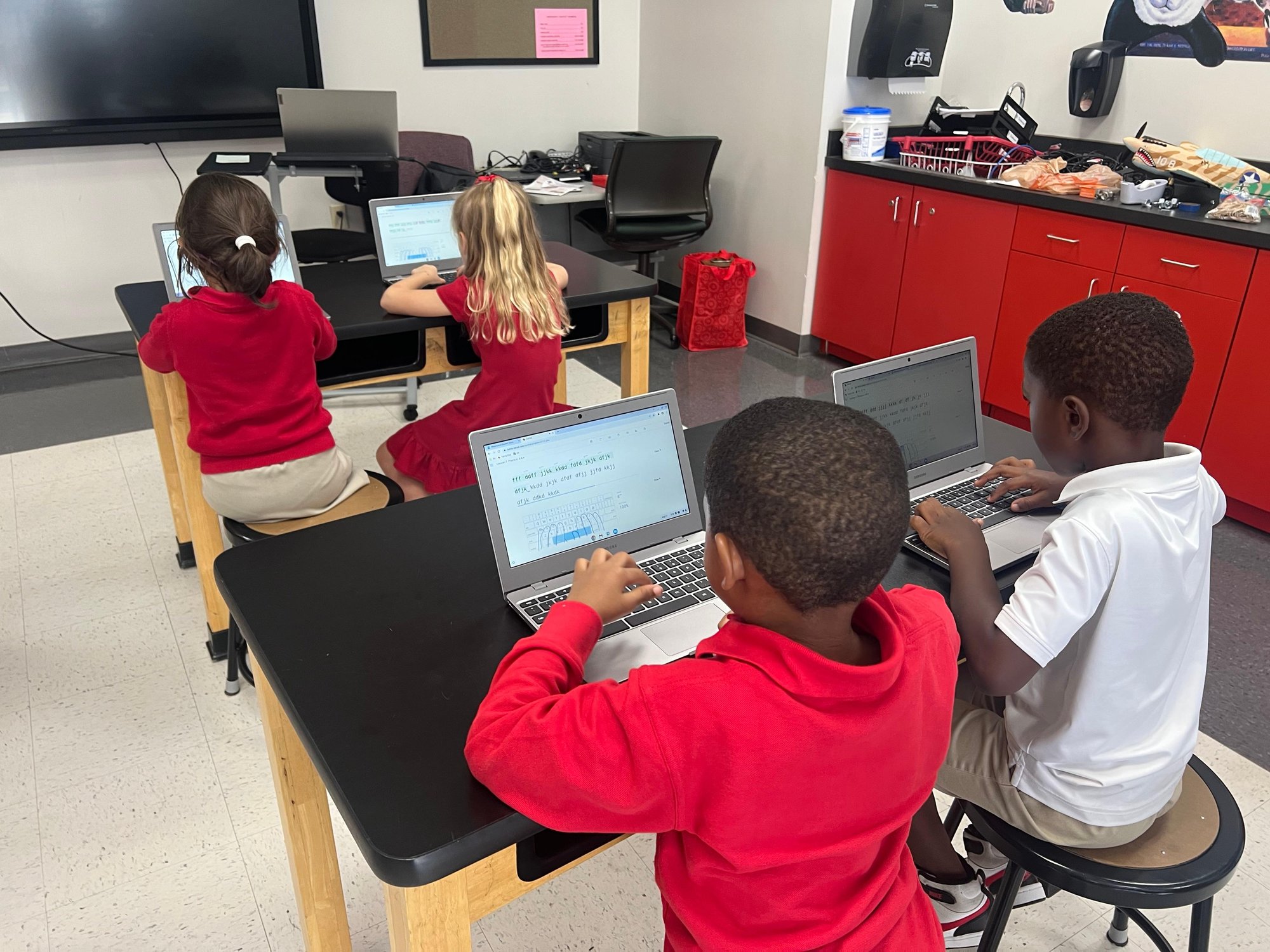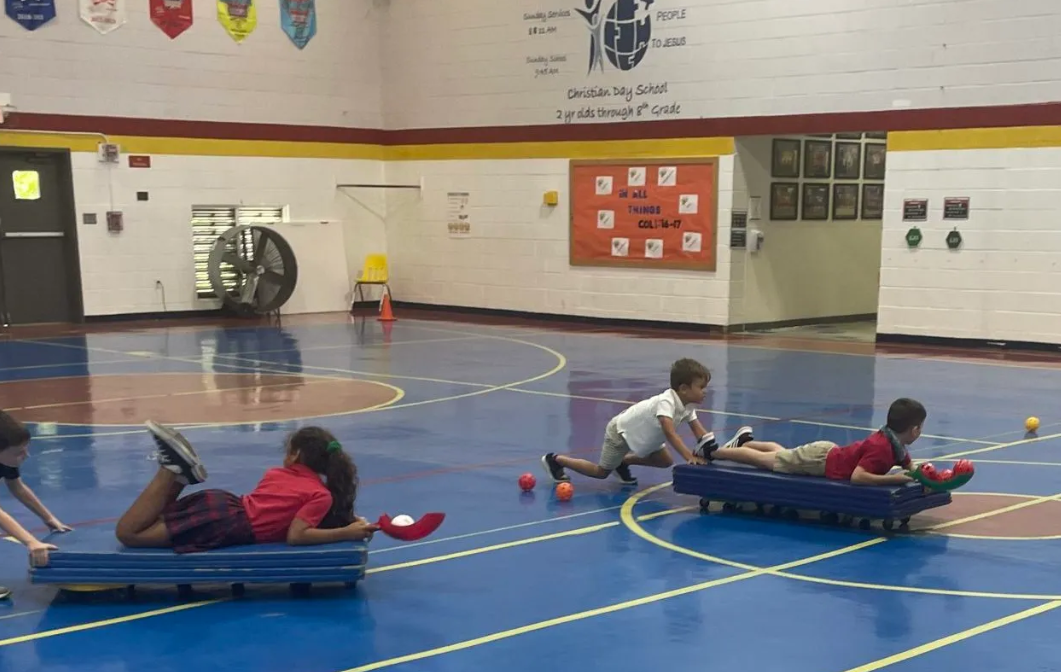Growth theme
Lorem ipsum dolor sit amet, consectetur adipiscing elit.
Specials
Faith Lutheran School

Spanish Curriculum and Instruction

Spanish is taught to ECE4 classes through 5th grade. Sequentially taught, students expand their understanding of the Spanish language, including the use of greetings, commands, phrases, numbers, colors, and other daily-use vocabulary. Students speak, count, and sing in the Spanish language.
This well-rounded approach to acquiring another language includes singing Spanish traditional, popular, and Christian songs; learning about traditions and holidays of Spanish speaking countries; hearing Hispanic folk tales; and playing Hispanic games.
Spanish Elementary Level
Spanish at the elementary level introduces students to spoken and written components of the Spanish language, providing students the opportunity to practice listening, speaking, reading, writing and grammar. By the end of the course, students should be able to speak words, phrases and sentences with proper pronunciation and intonation.
Students learn how to use formal and informal words and phrases in social settings, how to write grammatically correct sentences and paragraphs in formal and informal Spanish, read elementary texts written in Spanish and recognize cultural differences that are reflected when Spanish is spoken.

Fine Arts
Music Curriculum and Instruction

Fine Arts is an integral part of our education and instruction here at Faith Lutheran School.
We believe that our students have many talents, and through the avenue of Fine Arts, they may not only showcase their talents, but also share them to give glory back to God who bestowed those gifts upon them.
The content of the music curriculum, like that of the music standards of learning, is intended to support the following goals for students: (based on age/grade level)
Develop a general understanding of music through musical experiences including singing, playing instruments, performing, composing, listening, and responding to music with movement (videos, audio samples, chapel services, special programs, or events in addition to weekly classroom activities).
Develop a general ability to read basic notation which includes acquiring the basic knowledge and skills necessary to comprehend and express ideas with words, numbers, and other symbols.
Create basic works of music during songwriting workshop classes that reflect students’ thoughts and emotions into musical expression.
Develop critical-thinking skills by investigating and analyzing various sides of the music discipline.
Demonstrate awareness of and responsibility for the safe and responsible use of materials, equipment, methods, and technologies.
Demonstrate understanding of the relationship of music to biblical history and culture.
Make connections between music and other fields of knowledge (art, science, literature, math, etc.)
Demonstrate the ability to apply aesthetic criteria for making musical decisions. While these goals are formidable ones, Faith Lutheran School and Church in partnership with the home and the community make it possible for the educational standards to be fulfilled.

Art Curriculum and Instruction

Art lessons that are introduced to K-12 students help them to see the world in new ways. Students will learn how art can help them to communicate their own ideas. Over the course of the school year, our students will explore the different elements and principles of art (i.e. color, shape, texture). We will experiment with a variety of mediums and materials (i.e. watercolor, oil pastels, pencils, canvas).
Students will also learn about the works of many different artists as well as the different styles of art from Pop Art to Expressionism to Realism and beyond. Grades 3rd through 5th will also cover other types of ‘art’, such as photography, poetry, etc. Our hope for your child is that they discover their creative side and are able to express themselves in a new and exciting way.

Technology Curriculum and Instruction

Students at Faith each get a Chromebook to use from the beginning of Kindergarten. By the time the students get to middle school, students have been introduced to numerous applications that provide them with technology skills such as keyboarding, word processing, and basic computer functions.
In Technology we work to refine our knowledge of basic computer functions to build mastery in essential skills for presentation and publishing. We spend time discussing Digital Wellness and Safety. Students create a website through simple coding, along with induction to creating in a 3-D world.
We have partnered with CompTia, an international platform designed to help you get the tech career you deserve with industry-leading certifications, courses and expert knowledge. CompTia is using their platform to develop a curriculum for Middle school students. Our goal is to unlock young people's potential through technology as we bring high-quality tech education to youth.

Physical Education Curriculum and Instruction
The Faith Lutheran School (FLS) physical education (PE) curriculum focuses on well-designed lessons under the categories of Locomotor, Non-Locomotor, Health Fitness, Fitness Awareness, Personal Responsibility, and Respect. Students from ECE-1 through 5th grade participate in the PE program.

Early Childhood
As an introductory-based program, the activities designed for the ECE students include creative ways to develop motor skills, movement, hand-and-eye coordination. Students are encouraged to demonstrate God’s love to one another in group activities and games. Students grow mentally, physically and spiritually while having fun.
Kindergarten through Second
Starting in Kindergarten and moving through 2nd grade, students continue to develop strengthen their understanding of basic PE skills and appropriate game play. Spatial awareness, movement, hand-and-eye coordination and the overall understanding of how to control their body remains a focus throughout the Kindergarten through 2nd grade PE program.

Third through Fifth
The 3rd through 5th grade PE program continues to build students’ motor skills, improving speed, agility, coordination and power. As motor skills strengthen, introducing organized sports and games foster a Christ-loving learning environment for healthy competition, sportsmanship and encouragement. Students learn to work together, build each other up, and focus on the strengths of each individual person. In addition to developing basic skills, healthy habits and personal health care help students realize the need to care for their body, a gift from God.
Do you want to find out more?
